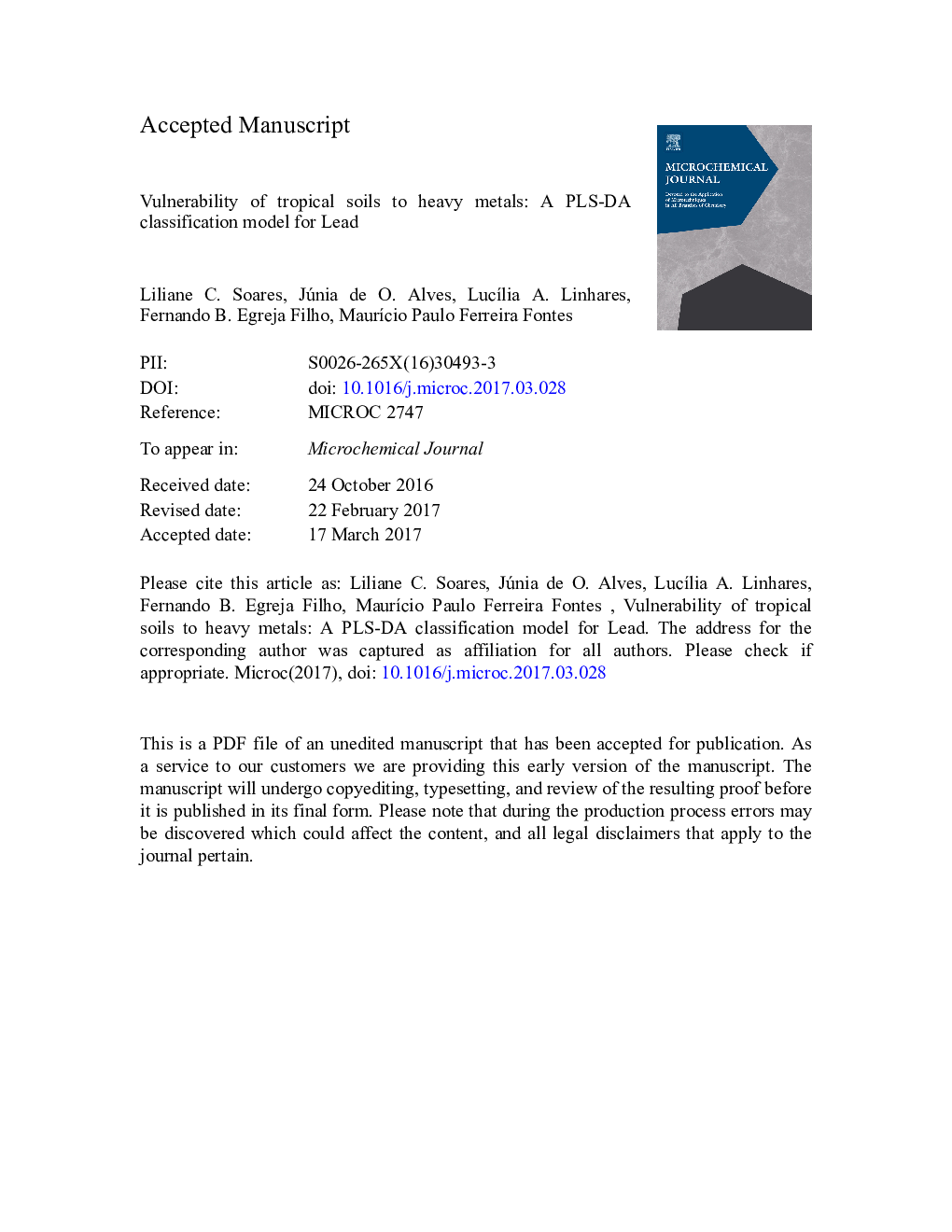| Article ID | Journal | Published Year | Pages | File Type |
|---|---|---|---|---|
| 5139029 | Microchemical Journal | 2017 | 28 Pages |
Abstract
One of the most important components of the soil vulnerability to heavy metals is related to a situation where the critical load of the soil be exceeded, causing the releasing of retained metals. Soil vulnerability to a metal is a function mainly of the interaction forces between the metal and the soil matrix, which depends on the physical and chemical soil characteristics. This study aims to classify the soils as vulnerable or non-vulnerable for lead as a function of the soil characteristics using Partial Least Squares Discriminant Analysis (PLS-DA). The vulnerability was assessed by the determination of available fraction metal (AF), after a treatment with Pb2Â +. Percent AF, evaluated by extraction with KNO3 solution, was used as reference only to separate the samples into two classes (vulnerable and non-vulnerable) before the model construction. The data about soil characteristics were treated by PLS-DA aiming to discriminate the above-mentioned classes, i.e. vulnerable and non-vulnerable. The employed PLS-DA model was built with 20 and 10 samples for the training and test sets, respectively, and in all cases they were properly separated. The developed methodology shows high sensitivities (rate of true positives) and specificities (rate of true negatives) for the two classes. Finally, it can be envisaged that this approach has potential to be applied in classification of the soil vulnerability to lead, just based on soil characteristics.
Related Topics
Physical Sciences and Engineering
Chemistry
Analytical Chemistry
Authors
Liliane C. Soares, Júnia de O. Alves, LucÃlia A. Linhares, Fernando B. Egreja Filho, MaurÃcio P.F. Fontes,
